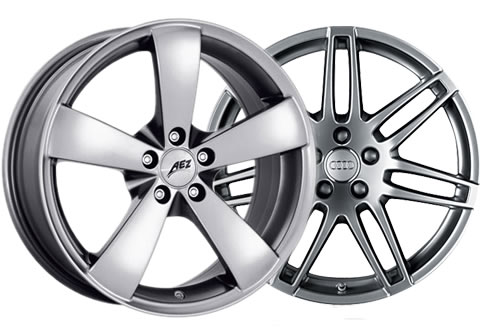Effects of Alloying Elements:-
About twenty different elements are used in various proportions and combinations in the manufacture of both carbon and low alloy structural steels. Some are used because they impart specific properties to the steel when they alloy with it (i.e. dissolve in the iron), or when they combine with carbon, wholly or in part, to form compounds known as carbides. Others are used because they are beneficial in ridding the steel of impurities or rendering the impurities harmless. Still another group is used to counteract harmful oxides or gases in the steel. The elements of this last group act only as fluxes or scavengers and do not remain in the steel to any extent after solidification occurs. Some elements fall into more than one of the above groups. The effects of some of the more common alloying elements are as follows:
Aluminum is often used to promote nitriding but its major use in steel making is as a deoxidizer. It may be used alone, as in low carbon steels where exceptional drawability is desired, or more commonly in conjunction with other deoxidizers. It effectively restricts grain growth and its use as a deoxidizer to control grain size is widely practiced in the steel industry.
Carbon, although not generally considered an alloying element, is by far the most important element in steel. As carbon is added to steel up to about .90 per cent, its response to heat treatment and its depth of hardening increase. In the "as- rolled" condition, increasing the carbon content increases the hardness, strength and abrasion resistance of steel but ductility, toughness, impact properties and machinability decrease.
Chromium contributes to the heat treatment of steel by increasing its strength and hardness. Its
carbides are very stable and chromium may be added to high carbon steels subject to prolong
anneals to prevent graphitization. Chromium increases resistance to both corrosion and abrasion. Chromium steels maintain strength at elevated temperatures.
Columbium is used in carbon steels to develop higher tensile properties. It also combines with
carbon to provide improved corrosion resistance, and is often used for this purpose in stainless
steels.
Iron is the principal element and makes up the body of steel. In commercial production iron always contains quantities of other elements. Production of pure iron is accomplished with difficulty and generally in small quantities. Iron does not have great strength, is soft, ductile and can be appreciably hardened only by cold work. Manganese by its chemical interaction with sulphur and oxygen makes it possible to roll hot steel. It is next in importance to carbon as an alloying element. It has a strengthening effect upon iron and also a beneficial effect upon steel by increasing its response to heat treatment. It increases the machinability of free machining steels but tends to decrease the ductility of low carbon drawing steels.
Molybdenum has a pronounced effect in promotion of hardenability. It raises the coarsening temperature of steel, increases the high temperature strength, improves the resistance to creep and enhances the corrosion resistance of stainless steels.
Nickel is soluble in iron and, in combination with other elements, improves the hardenability of steel and toughness after tempering. It is especially effective in strengthening unhardened steels and improving impact strength at low temperatures. It is used in conjunction with chromium in stainless steels.
Phosphorus strengthens steel but reduces its ductility. It improves the machinability of high sulphur steels and under some conditions may confer some increase in corrosion resistance.
Silicon is one of the principal steel deoxidizers and is commonly added to steel for this purpose. In amounts up to about 2.5% it increases the hardenability of steels. Specified coarse grain steels are silicon killed. In lower carbon electrical steels, silicon is used to promote the crystal structure desired in annealed sheets.
Sulphur added to steel increases machinability. Because of its tendency to segregate, sulphur
may decrease the ductility of low carbon drawing steel. Its detrimental effect in hot rolling is offset by manganese.
Titanium is an extremely effective carbide former and is used in stainless steels to stabilize the steel by holding carbon in combination. Titanium is used for special single coat enameling steels. In low alloy structural steels its use in combination with other alloys promotes fine grain structure and improves the strength of the steel in the "as-rolled" condition.
Vanadium is a mild deoxidizer and its addition to steel results in a fine grain structure which is maintained at high temperature. It has very strong carbide forming tendencies and very effectively promotes strength at high Temperatures, Vanadium steels have improved fatigue values and excellent response to heat treatment. In unhardened steels it is particularly beneficial in strengthening the metal.
